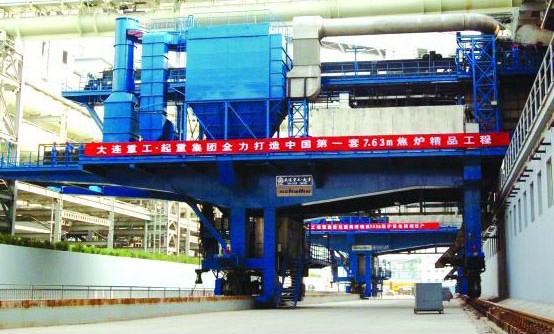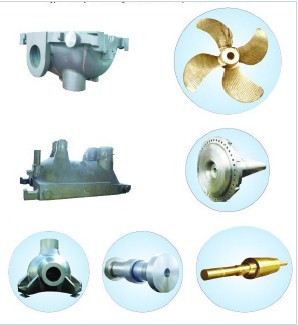DHI·DCW Group optimizes heavy equipment through Siemens PLM's simulation-guided design technology
Chinese manufacturer uses NX to enhance its competitive position; company reduces simulation modeling time by 70 percent while improving product innovation and bidding process.
Improving competitive position
DHI·DCW Group Co., Ltd. (DHI·DCW Group) is a 5,000-person enterprise created by the merger of heavy equipment manufacturer, Dalian Heavy Industry Co., Ltd., and DCW Group Co., Ltd., the leading crane supplier in China. DHI·DCW Group specializes in heavy equipment used in a variety of industries including metallurgy, mines, power, transportation, chemical, construction materials, grain storage and urban construction.
"At DHI·DCW Group, we pay great attention to enhancing our R&D (research and development) capabilities and building our IT (information technology) infrastructure" says Chunting Li, director of DHI?DCW's Simulation Department. "This ensures our core competencies stay at the forefront of the heavy equipment industry. We started using Siemens PLM Software's solutions more than 20 years ago. Through many years of R&D, we have gradually built mature simulation processes, specifications and various best-practice methods."
DHI·DCW Group has provided more than three million tons of heavy equipment and components over its history, for customers in China and abroad. Its goal is to become a leading supplier of this equipment on an international scale, offering first-class products, first-class management, and first-class service.
NX for simulation speeds ability to respond to market requirements
DHI·DCW Group uses NXTM software, an advanced product development system from Siemens PLM Software, to enhance its competitive performance. Using NX enables DHI·DCW Group to respond quickly during the bid quotation process, helping the company to quickly calculate structure cross-section size, weight and materials." For example, we use simulation-guided design and simulation-driven design as well as compare simulation results against industrial specifications," Li says. "This enhances our product development capabilities significantly and helps us rapidly respond to market requirements. With enhanced innovation capabilities, DHI·DCW Group has enjoyed rapid and sustainable development in recent years."
Li notes that the use of NX allows engineers to quickly develop various designs through rapid iteration of simple modifications to the existing model and simulation. Simulation results then guide engineers to the best design variant. "With these tools," he says, "we can efficiently manage the design model, simulation process and business process simultaneously. Using NX allows us to manage the integration of simulation data, specifications, collaboration and data traceability."
Fast design process, fewer prototypes
DHI·DCW Group has found that using NX helps the company control costs by simulating multiple designs quickly and efficiently in a virtual environment. Fewer physical prototypes are needed, which not only saves money, but also helps the company choose the most cost-effective and optimal solution. "We use NX CAD for digital mockup, interference checking, mechanism simulation and the fast generation of 2D drawings," says Li. "We are fully leveraging the NX suite of integrated solutions, including NX Nastran, to evaluate different types of product performance during the 3D modeling process." More specifically, DHI·DCW Group uses NX Nastran® software for static, modal and dynamic response analysis, as well as for optimization.
Shouyn Zang, a structural engineer at DHI·DCW Group, adds, "With the advanced simulation capabilities of NX, we can work on 3D geometry directly to build our simulation models. This reduces our modeling time by 70 percent and allows us to focus more on structure optimization. We can also perform many different kinds of simulation by leveraging the same finite element model using NX. As a result, we can make fast decisions and fix designs in a short time. Using NX CAE (computer-aided engineering) greatly helps keep our projects on schedule."
DHI·DCW Group engineers pay close attention to the accuracy and validity of finite element models. They expend considerable effort validating simulation results through correlation with test results. After they build finely tuned models, they consolidate all the related experiences and write them into simulation specifications for use in similar products. These specifications help to guide future design and simulation work and also help them develop optimized designs very rapidly. "Our engineers tell me that NX CAE is easy to use and efficient," says Li. "Thus, we can conduct more design iterations within a limited time frame and develop a more optimized design."


Continuous improvement
DHI·DCW Group plans to accelerate its process of building a world-class heavy equipment company. Plans include increasing its investment in simulation, enhancing the company’s R&D capabilities through advanced simulation software, developing high-end simulation talent, and acclimating to advanced international standards and specifications.
DHI·DCW Group Co., Ltd. (DHI·DCW Group) is a 5,000-person enterprise created by the merger of heavy equipment manufacturer, Dalian Heavy Industry Co., Ltd., and DCW Group Co., Ltd., the leading crane supplier in China. DHI·DCW Group specializes in heavy equipment used in a variety of industries including metallurgy, mines, power, transportation, chemical, construction materials, grain storage and urban construction.

"At DHI·DCW Group, we pay great attention to enhancing our R&D (research and development) capabilities and building our IT (information technology) infrastructure" says Chunting Li, director of DHI?DCW's Simulation Department. "This ensures our core competencies stay at the forefront of the heavy equipment industry. We started using Siemens PLM Software's solutions more than 20 years ago. Through many years of R&D, we have gradually built mature simulation processes, specifications and various best-practice methods."
DHI·DCW Group has provided more than three million tons of heavy equipment and components over its history, for customers in China and abroad. Its goal is to become a leading supplier of this equipment on an international scale, offering first-class products, first-class management, and first-class service.
NX for simulation speeds ability to respond to market requirements
DHI·DCW Group uses NXTM software, an advanced product development system from Siemens PLM Software, to enhance its competitive performance. Using NX enables DHI·DCW Group to respond quickly during the bid quotation process, helping the company to quickly calculate structure cross-section size, weight and materials." For example, we use simulation-guided design and simulation-driven design as well as compare simulation results against industrial specifications," Li says. "This enhances our product development capabilities significantly and helps us rapidly respond to market requirements. With enhanced innovation capabilities, DHI·DCW Group has enjoyed rapid and sustainable development in recent years."
Li notes that the use of NX allows engineers to quickly develop various designs through rapid iteration of simple modifications to the existing model and simulation. Simulation results then guide engineers to the best design variant. "With these tools," he says, "we can efficiently manage the design model, simulation process and business process simultaneously. Using NX allows us to manage the integration of simulation data, specifications, collaboration and data traceability."
Fast design process, fewer prototypes
DHI·DCW Group has found that using NX helps the company control costs by simulating multiple designs quickly and efficiently in a virtual environment. Fewer physical prototypes are needed, which not only saves money, but also helps the company choose the most cost-effective and optimal solution. "We use NX CAD for digital mockup, interference checking, mechanism simulation and the fast generation of 2D drawings," says Li. "We are fully leveraging the NX suite of integrated solutions, including NX Nastran, to evaluate different types of product performance during the 3D modeling process." More specifically, DHI·DCW Group uses NX Nastran® software for static, modal and dynamic response analysis, as well as for optimization.
Shouyn Zang, a structural engineer at DHI·DCW Group, adds, "With the advanced simulation capabilities of NX, we can work on 3D geometry directly to build our simulation models. This reduces our modeling time by 70 percent and allows us to focus more on structure optimization. We can also perform many different kinds of simulation by leveraging the same finite element model using NX. As a result, we can make fast decisions and fix designs in a short time. Using NX CAE (computer-aided engineering) greatly helps keep our projects on schedule."
DHI·DCW Group engineers pay close attention to the accuracy and validity of finite element models. They expend considerable effort validating simulation results through correlation with test results. After they build finely tuned models, they consolidate all the related experiences and write them into simulation specifications for use in similar products. These specifications help to guide future design and simulation work and also help them develop optimized designs very rapidly. "Our engineers tell me that NX CAE is easy to use and efficient," says Li. "Thus, we can conduct more design iterations within a limited time frame and develop a more optimized design."


Continuous improvement
DHI·DCW Group plans to accelerate its process of building a world-class heavy equipment company. Plans include increasing its investment in simulation, enhancing the company’s R&D capabilities through advanced simulation software, developing high-end simulation talent, and acclimating to advanced international standards and specifications.









